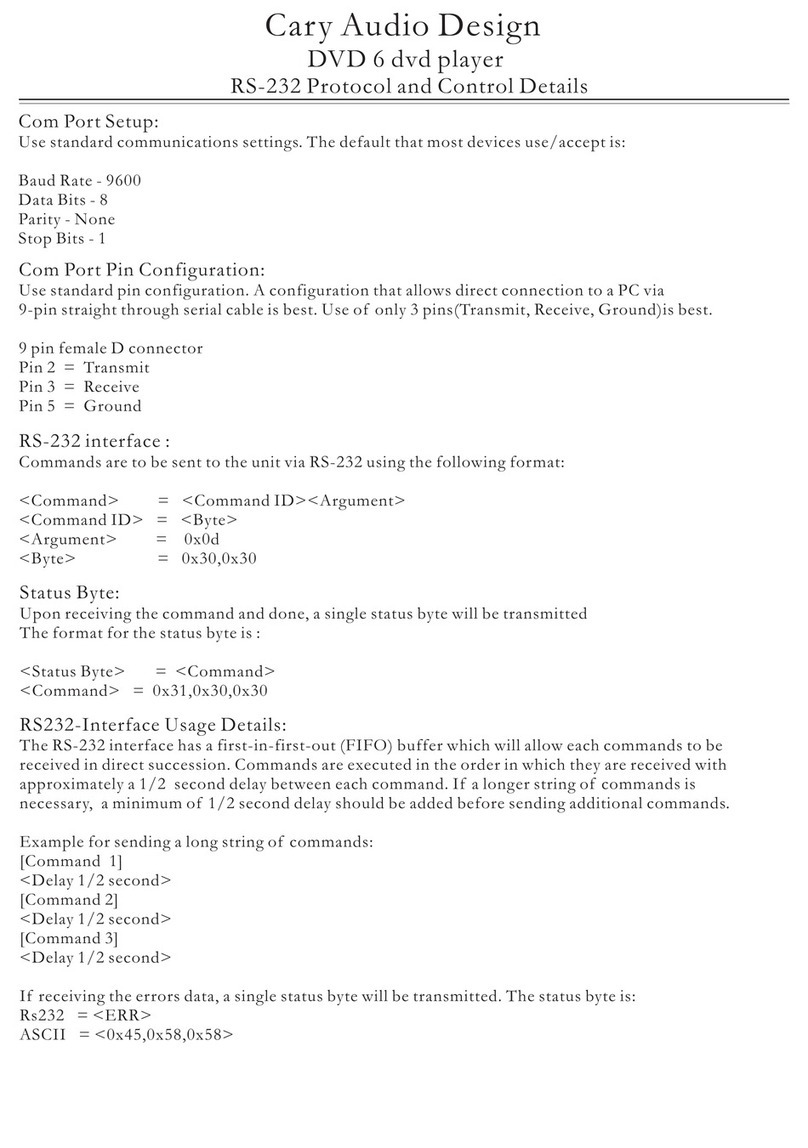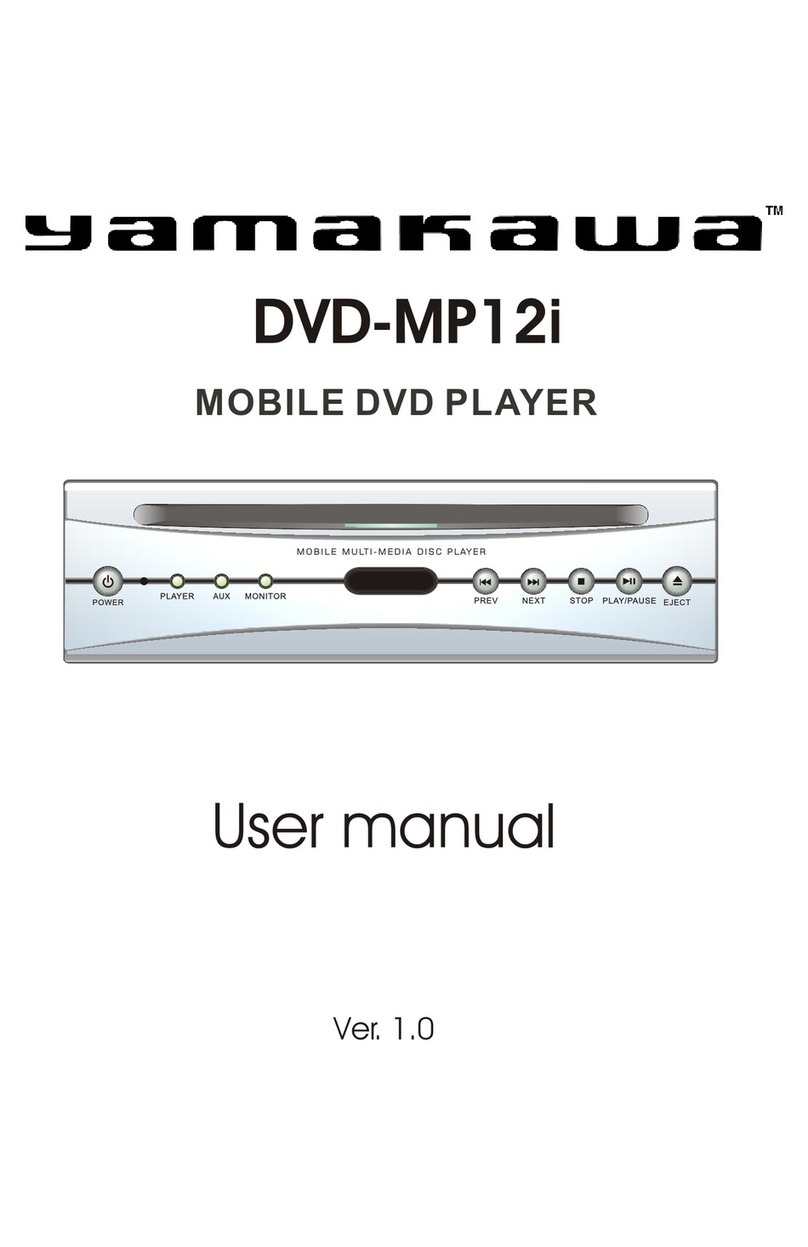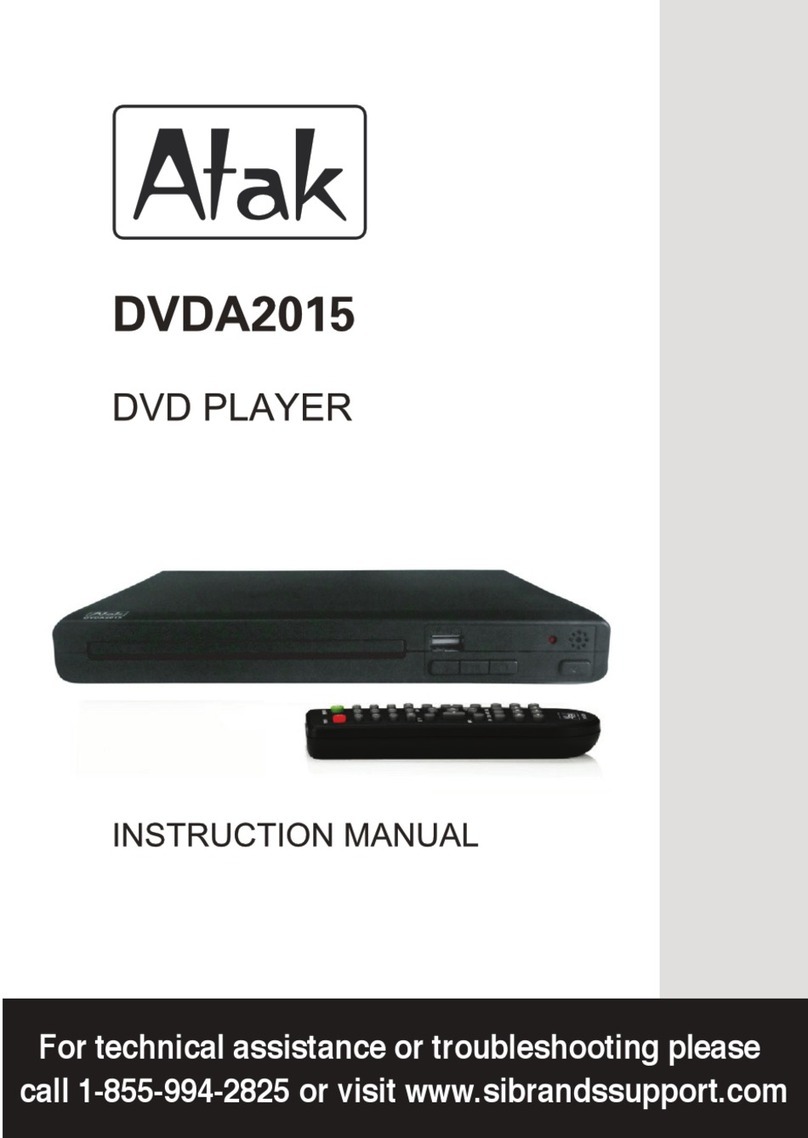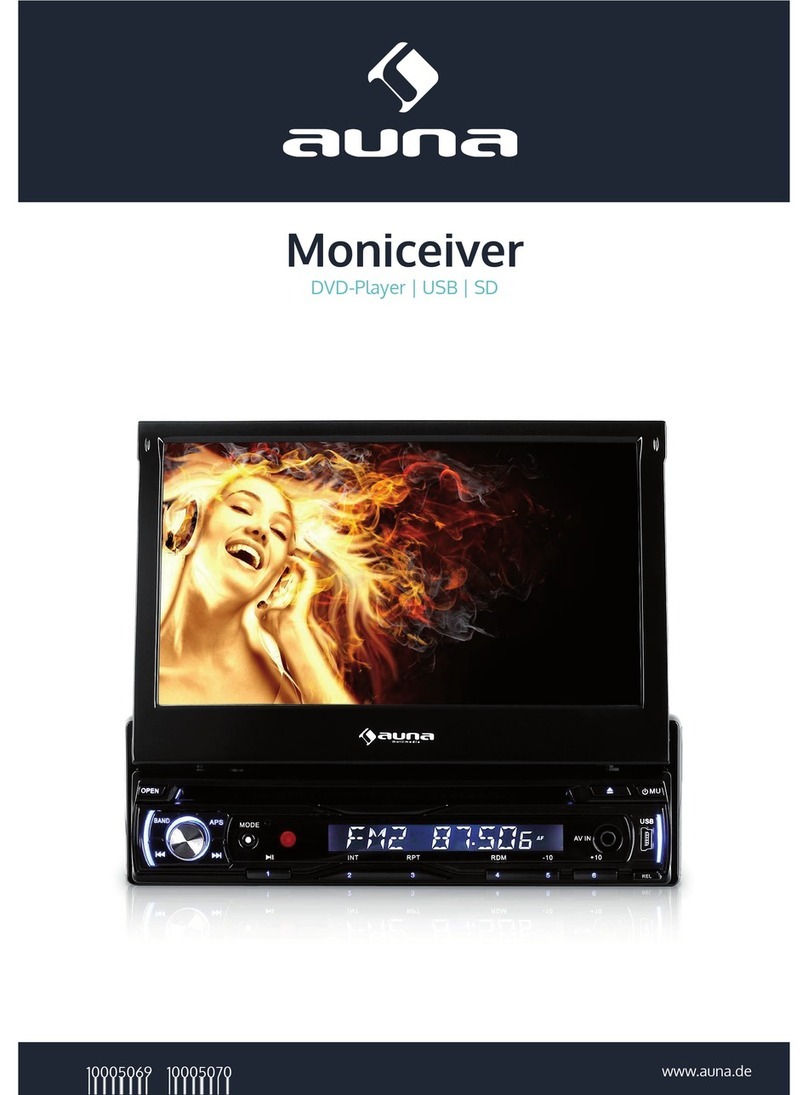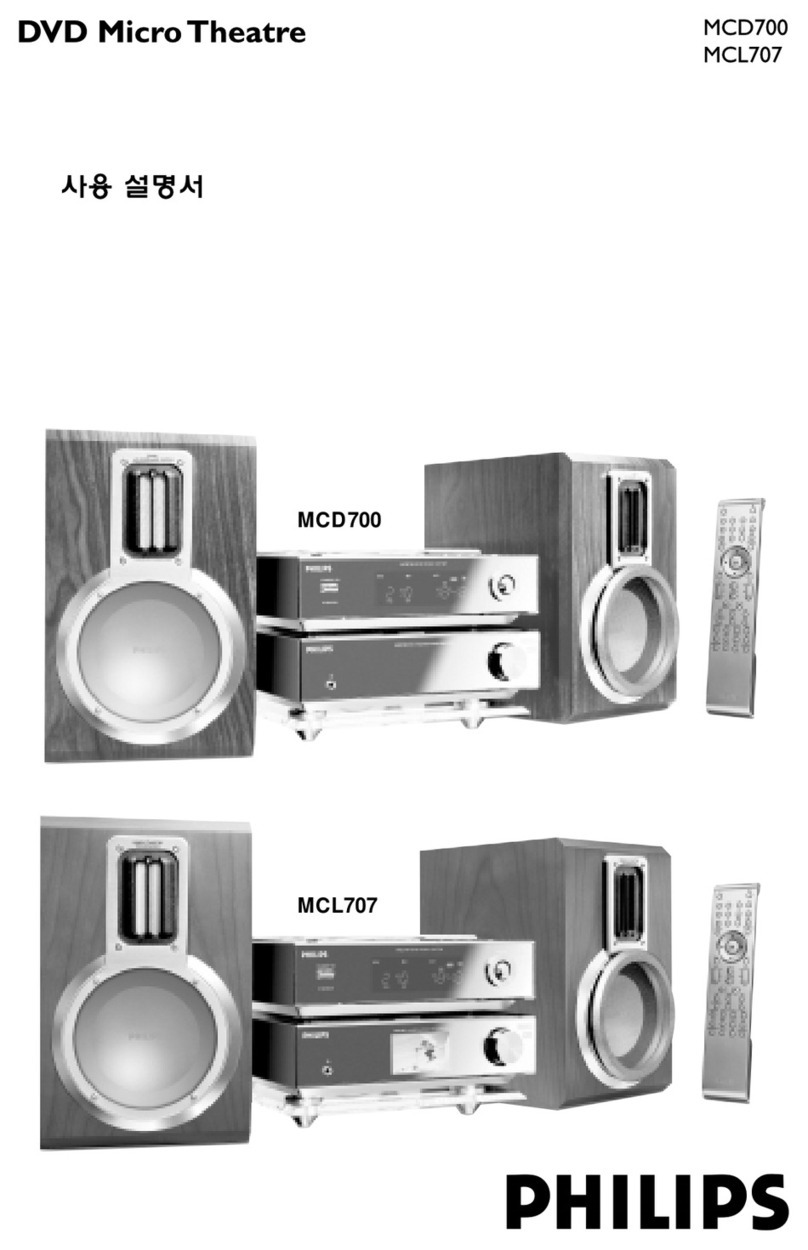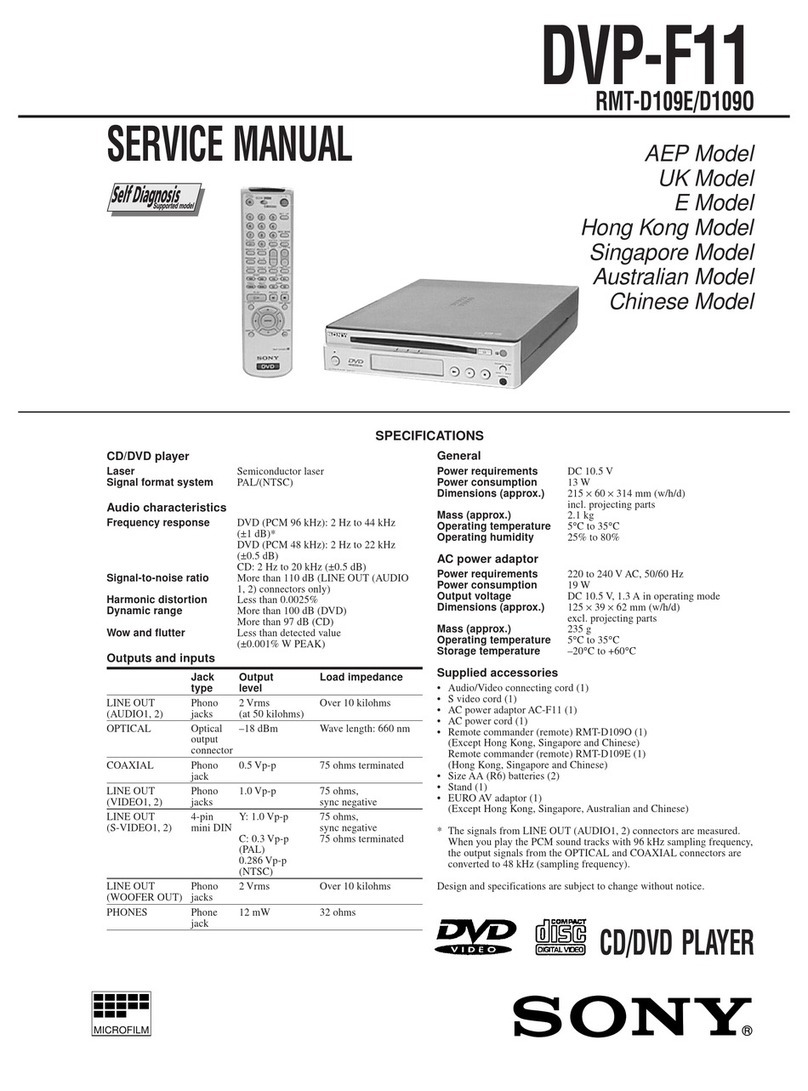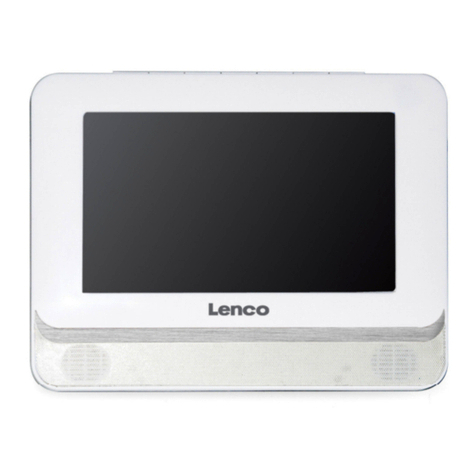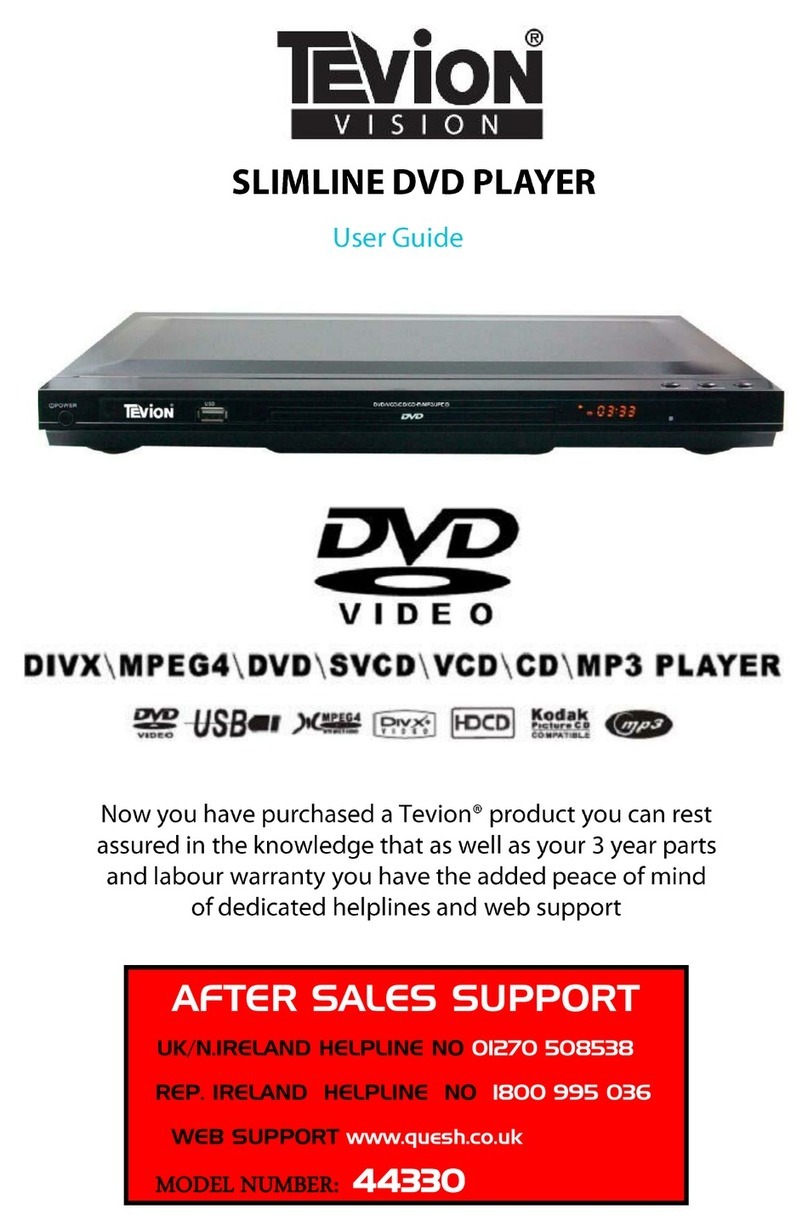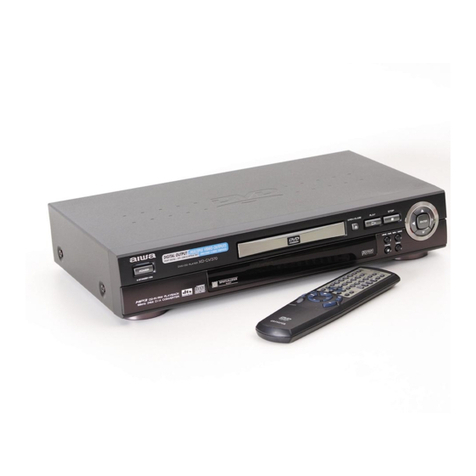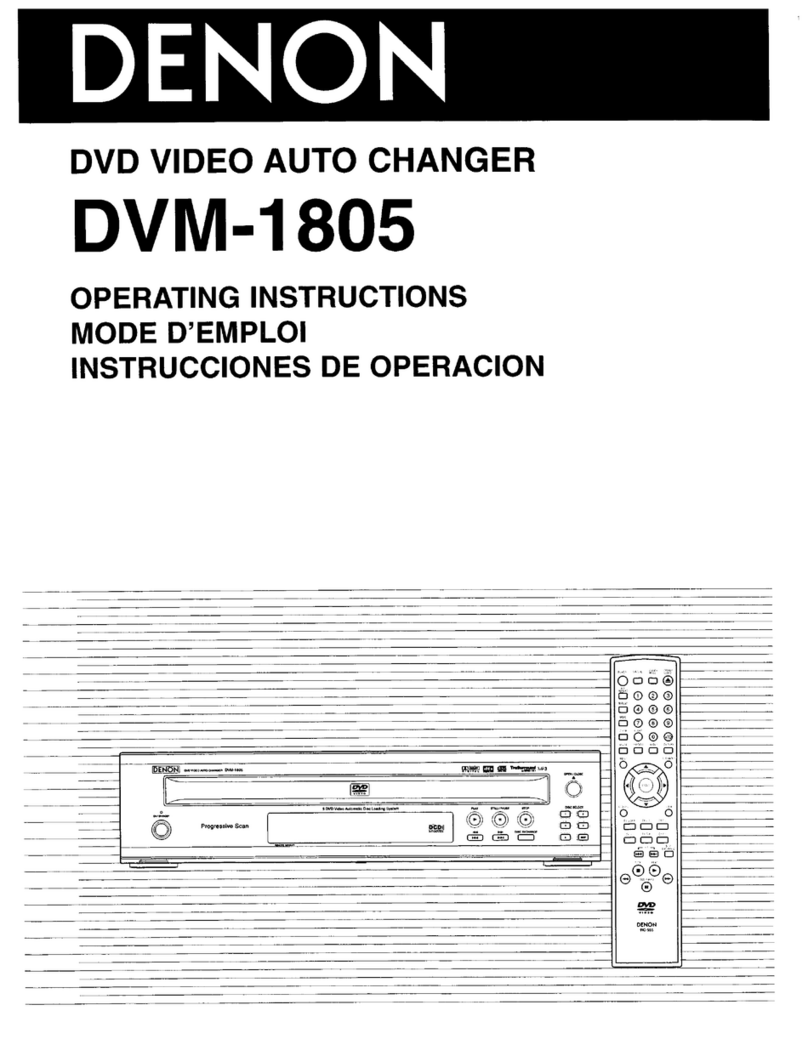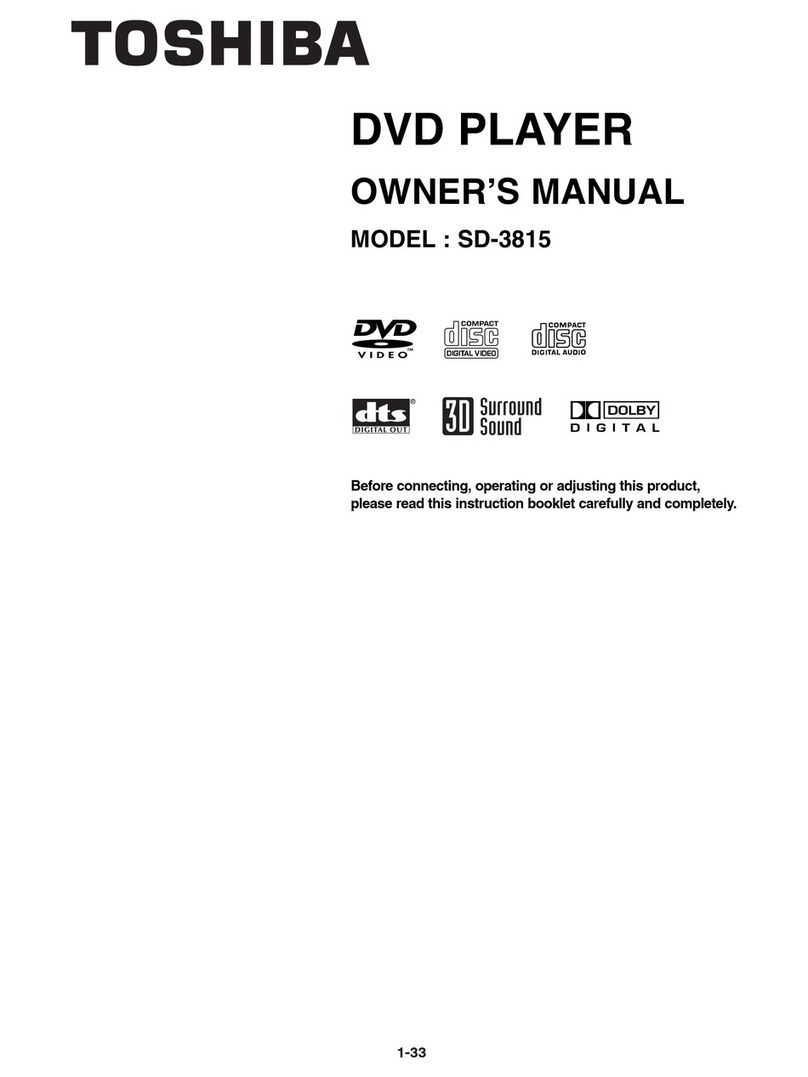Cary Audio Design Cinema DVD-6 User manual

NOTE:
Before installing your new DVD player, please read this manual carefully, as it will inform
you of the specifications, proper installation procedures and operation procedures. Also
included in this manual are guidelines on how to properly service and care for your new
player. Thank you for buying a Cary Audio Design CINEMA DVD-6 DVD player!
, HDCD®, High Definition Compatible Digital®and Pacific Microsonics™are either registered
trademarks or trademarks of Pacific Microsonics, Inc. in the United States and/or other countries.
HDCD system manufactured under license from Pacific Microsonics, Inc. This
product is covered by one or more of the following:
Country PatentNo.
United States 5,479,168 5,638,074 5,640,161 5,808,574
5,838,274 5,854,600 5,864,311 5,872,531
Australia 669114
Other patents pending.
CINEMA DVD-6
192kHz/24bit D/A CONVERTER
HDCD DVD PLAYER
OPERATINGMANUAL

Specifications
Video Specifications
Digital Audio Output Specifications
Audio Specifications
The following section describes the CINEMA DVD-6 basic specifications. The specifications are subject to change
or improvement without notice or obligation.
Playback System
Video D/A Converter
Video S/N Ratio
Video Signal Resolution
Signal Formal System
Composite Video Output
S-Video
Component Video Output
DVD Video/Video CD/CD/DVD-RW/DVD+RW/CD-RW
10-bit/54mHz
78.5 dB
540 TV Lines (DVD)
PAL (625/50, 5225/60) / NTSC (525/60, 625/50)
1.0Vp-p (75 ) Sync Negative
Luminance Signal : 1Vp-p (75 load)
Color Signal : 0.286Vp-p (75 load)
Y Output Level : 1Vp-p (75 load)
Pb Output Level : 0.7Vp-p (75 load)
Pr Output Level : 0.7Vp-p (75 load)
Master Clock Jitter
Digital / Analog Converters
Analog Filter
Analog Outputs
Below measurable levels
(3) Burr Brown PCM1738u
3rd Order Bessel
Ended RCA (Front L & R)
Single-Ended RCA (Surround L/R, Center and Subwoofer)
Frequency Range ...........................
Amplifier Linearity .........................
Phase Linearity .............................
Dynamic Range .............................
Signal-to-Noise Ratio .....................
Channel Separation .......................
Total Harmonic Distortion ................
Audio Output Level ........................
2 Hz - 22KHz Fs = 48KHz
2 Hz - 44KHz Fs = 96KHz
0.1dB (20Hz - 20KHz)
3 (20Hz - 20KHz)
117dB (1KHz)
117dB (1KHz)
115dB (1KHz)
0.0004% (1KHz)
2.2Vrms
Coaxial Digital
Optical Digital
Power Input
Power Consumption
Dolby Digital / DTS / LPCM 200mV RMS(75 )
Dolby Digital / DTS / Toslink
Reconfigured at factory
100-120/200-240 VAC, 50-60Hz
28 Watts

1
18
2
3
4
5
6
7
8
9
10
11
12
13
14
15
16
17
19
Using the Remote Control
This section explains how to get the best use of the remote control.
The following buttonscan be used to operate theDVD player.
OPEN/CLOSE
Press to openor close the disc tray
Number buttons
GOTO
Press to skipto specified title, chapter or time
ANGLE
Press to changethe camera angle during DVD multi-angle
scene playback
SETUP
Press to display(or exit) the on-screen
ENTER & UP/DOWN/LEFT/RIGHT
Use to navigateon-screem displays and menus.
Press ENTER toselect an option or execute acommand
OSD DISPLAY
Press to displayinformation about the disc playing
Press to stopthe disc (you can resume playbackby pressing (play))
Press to pauseplayback; press again to restart
POWER
Press to switchthe player on or into standby
SUBTITLE
Press to selecta subtitle display
AUDIO
Press to selectthe audio channel or language
MENU
Press to displaythe top menu of a DVDdisc
TITLE
Press to displaya DVD disc menu, or theDisc Navigator if
a DVD-RW, CD, Video CD orMp3 disc isloaded
Press to startor resume playback
Press to jumpto the start of the previous/ next chapter / track
Press to reverse/ forward slow motion playback, framereverse /
advance and reverse/ forward scanning.
ZOOM +/- BUTTONS
Press to enlargeand reduce thescreen image.
VOLUME
Press to adjustthe vlume
4
3
1
STOP
PAUSE
PLAY
PREVIOUS / NEXT
REVERSE/ FORWARD
2
5
6
7
8
9
10
11
12
13
14
15
16
17
18
19
Using the remote control to operate the DVD player

Making Connections
To accommodate a wide range of home entertainment systems, this player features numerous connection
types for both audio and video, please refer to the instructions on this and the following pages to determine
the best possible type of connections for your system.
Connections to a TV
Before connecting
Refer to the instruction manuals supplied with any and all components that you plan
to connect the DVD Player to.
Be sure to turn off the power of all components to be connected and unplug them
from the wall outlet before making any connections.
Connect the DVD Player to the TV directly. If you connect the DVD Player to a VCR,
TV/VCR combination, or video selector, the playback picture may be distorted as
DVD Video images are copy protected.
Please note that video connections to a TV or monitor are necessary because some
discs require on-screen menu interaction before they can be played.
Using the audio / video connection cable
Using the audio audio/video cable, make audio connections from the 5.1 CH SURROUND
ANALOG OUTPUT L and R jacks to the corresponding audio input jacks on the TV.
In the same manner, make video connection from the VIDEO OUTPUT VIDEO jack to
the corresponding video input jack on the TV.
Be sure to set Audio Setup Speaker Setup Select to "Movie Stereo" using the
on-screen setup menu.
Note
Be sure to match the colors of the plugs on the cable with the corresponding jacks
on the DVD Player and the TV : yellow for video, red for R (right) audio and
white for L (left) audio.

Making Connections
Making component video connections
Optional Video Connections
Visible improvement in DVD Video quality can be achieved by making either S-Video or
component video connections to a TV or monitor compatible with these of connections.
Note
When either S-Video or component video connection is made, it is not necessary to make
composite video connections using the yellow cord of the audio-video cable.
If the TV or monitor has component video inputs, making this type of video connection
will produce the ideal picture quality for the presentation of DVD-Video. Using a component
video cable (sold separately), connect the VIDEO OUTPUT COMPONENT jacks to the
corresponding component video input jacks on the TV.
Actual labels for component video inputs may vary depending on the TV manufacturer.
(E.g. Y, R-Y, B-Y or Y, CB, CR)
In some TVs or monitors, the colors levels of the playback picture may be reduced slightly
or the tint may change. In such a case, adjust the TV or monitor for optimum performance.
Be sure to set Audio Setup Speaker Setup Select to "Movie Stereo" using the on-screen menu.
PROGRESSIVE outputs / inputs
Some TVs or monitors are equipped with component video inputs that are capable of
reproducing a progressively scanned video signal. Connecting to these inputs allows
you to view the highest quality pictures with less flicker.
Interlaced outputs / inputs
Some TVs or monitors are equipped with component video inputs. Connecting to these
inputs allows you to enjoy higher quality picture playback. In some TVs or monitors,
the color levels of the playback picture may be reduced slightly or the tint may change.
In such a case, adjust the TV or monitor for optimum performance.
Making S-Video connections
If the TV or monitor has an S-video input, making this type of video connection will produce
improved picture quality. Using a S-video cable, connect the VIDEO OUTPUT S-VIDEO jack
to the corresponding S-video input jack on the TV.Be sure to set Audio Setup Speaker Setup
Select to "Movie Stereo" using the on-screen menu.
Other manuals for Cinema DVD-6
2
Table of contents
Other Cary Audio Design DVD Player manuals
